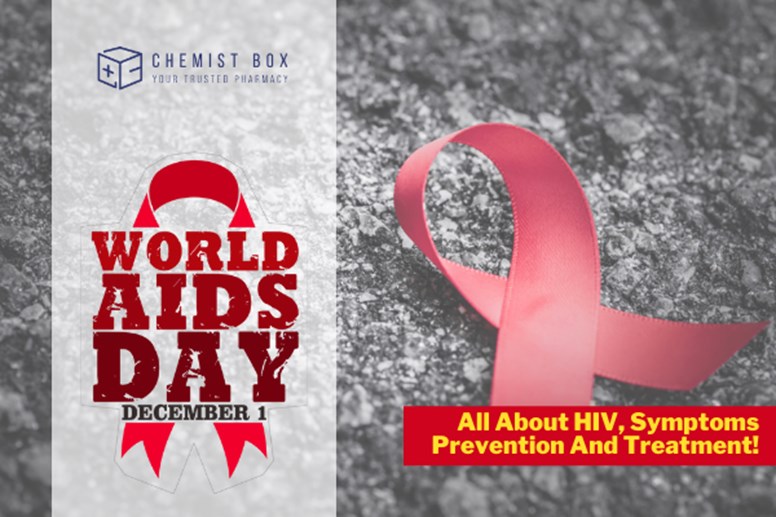
AIDS or Acquired Immuno Deficiency Syndrome, is a disease caused in people infected with HIV virus. Every year, December 1st is observed as World AIDS Day by the World Health Organisation, purposely to create awareness about this disease among the people.
AIDS is a transferable disease that can be transmitted to a healthy person from an infected person only via body fluids namely blood, semen, rectal fluids, vaginal fluids, and even breast milk.
Well, there is a hype about AIDS among people, they often consider that AIDS can be transmitted if a healthy person touches an infected person which is really not true as per the facts.
Thus, through this article we are trying to make our readers understand about AIDS, its symptoms, prevention and treatment!
What Is HIV And AIDS?
HIV stands for human immunodeficiency virus, which attacks the immune system in the body of an individual. As a result, the affected person becomes unable to efficiently combat any microbial pathogens invading the body and cannot control the progression of grave disorders like cancers and neurodegenerative ailments like Alzheimer's, dementia etc.
This leads to the patient becoming immunodeficient, meaning they develop a compromised immune system with weakened defences against any foreign components targeting the body.
When HIV evolves to the maximum extent in the body of the affected individual, it manifests itself as Acquired Immunodeficiency Syndrome (AIDS). This condition causes certain severe cancers like breast cancer, prostate cancer, reproductive malfunctions, and metastasizing infections.
Early Symptoms Of HIV
The first few weeks after someone contracts HIV is called the acute infection stage. During this time, the virus reproduces rapidly. The person’s immune system responds by producing HIV antibodies, which are proteins that take measures to respond against infection.
During this stage, some people have no symptoms at first. However, many people experience symptoms in the first month or so after contracting the virus, but they often don’t realize HIV causes those symptoms.
This is because symptoms of the acute stage can be very similar to those of the flu or other seasonal viruses, such as:
Early symptoms of HIV can include fever, chills, swollen lymph nodes, skin rash, sore throat, headache, and nausea. Because these symptoms are similar to common illnesses like the flu, the person who has them might not think they need to see a healthcare provider.
Whether a person has symptoms or not, during this period their viral load is very high. The viral load is the amount of HIV found in the bloodstream. A high viral load means that HIV can be easily transmitted to someone else during this time.
However, HIV symptoms can vary from person to person.
What Are The Symptoms Of AIDS?
AIDS refers to acquired immunodeficiency syndrome. With this condition, the immune system is weakened due to HIV that’s typically gone untreated for many years.
If HIV is found and treated early with antiretroviral therapy, a person will usually not develop AIDS.
People with HIV may develop AIDS if their HIV is not diagnosed until late or if they know they have HIV but don’t consistently take their antiretroviral therapy.
They may also develop AIDS if they have a type of HIV that’s resistant to (doesn’t respond to) the antiretroviral treatment.
Symptoms of AIDS can include:
Treatment Options For HIV-AIDS
Treatment should begin as soon as possible after a diagnosis of HIV, regardless of viral load.
The main treatment for HIV is antiretroviral therapy, a combination of daily medications that stop the virus from reproducing. This helps protect CD4 cells, keeping the immune system strong enough to take measures against disease.
Antiretroviral therapy helps keep HIV from progressing to AIDS. It also helps reduce the risk of transmitting HIV to others.
When treatment is effective, the viral load will be “undetectable.” The person still has HIV, but the virus is not visible in test results.
However, the virus is still in the body. And if that person stops taking antiretroviral therapy, the viral load will increase again, and the HIV can again start attacking CD4 cells.
What Are Ways By Which Hiv Transmission Can Be Prevented?
The best way to prevent the spread of HIV and avert contracting the fatal condition of AIDS is to limit exposure to the risk factors.
The general public can actively engage their community and take strides towards remarkably decreasing the incidence of HIV and AIDS amongst people of all age groups, be it young adults, middle-aged or the elderly.
Some effective measures in this regard comprise:
Stay Informed! Stay Healthy Stay Happy!
Thank You!
0 Items ₹ 0
| Product Name | Unit Price | Qty | Subtotal |
|---|